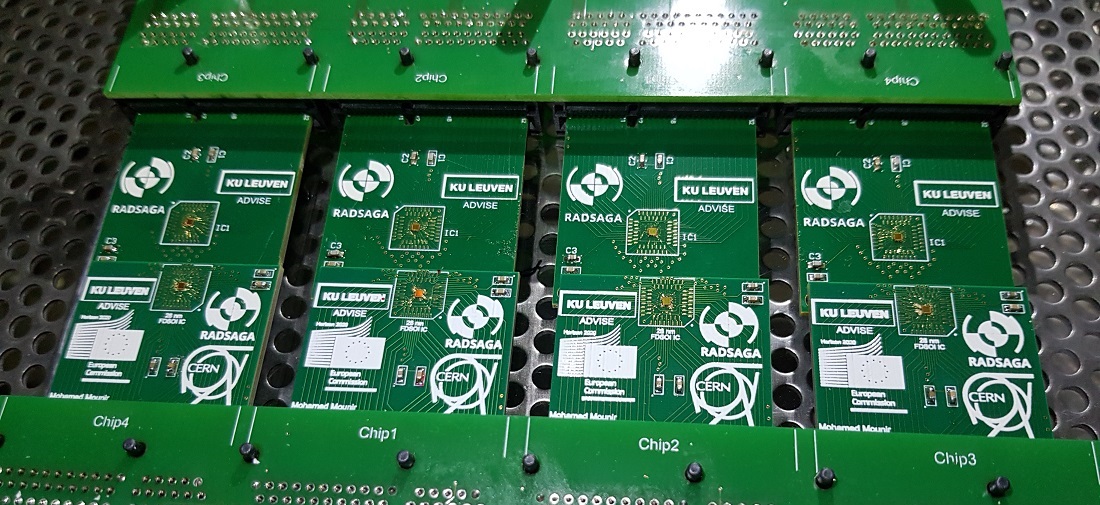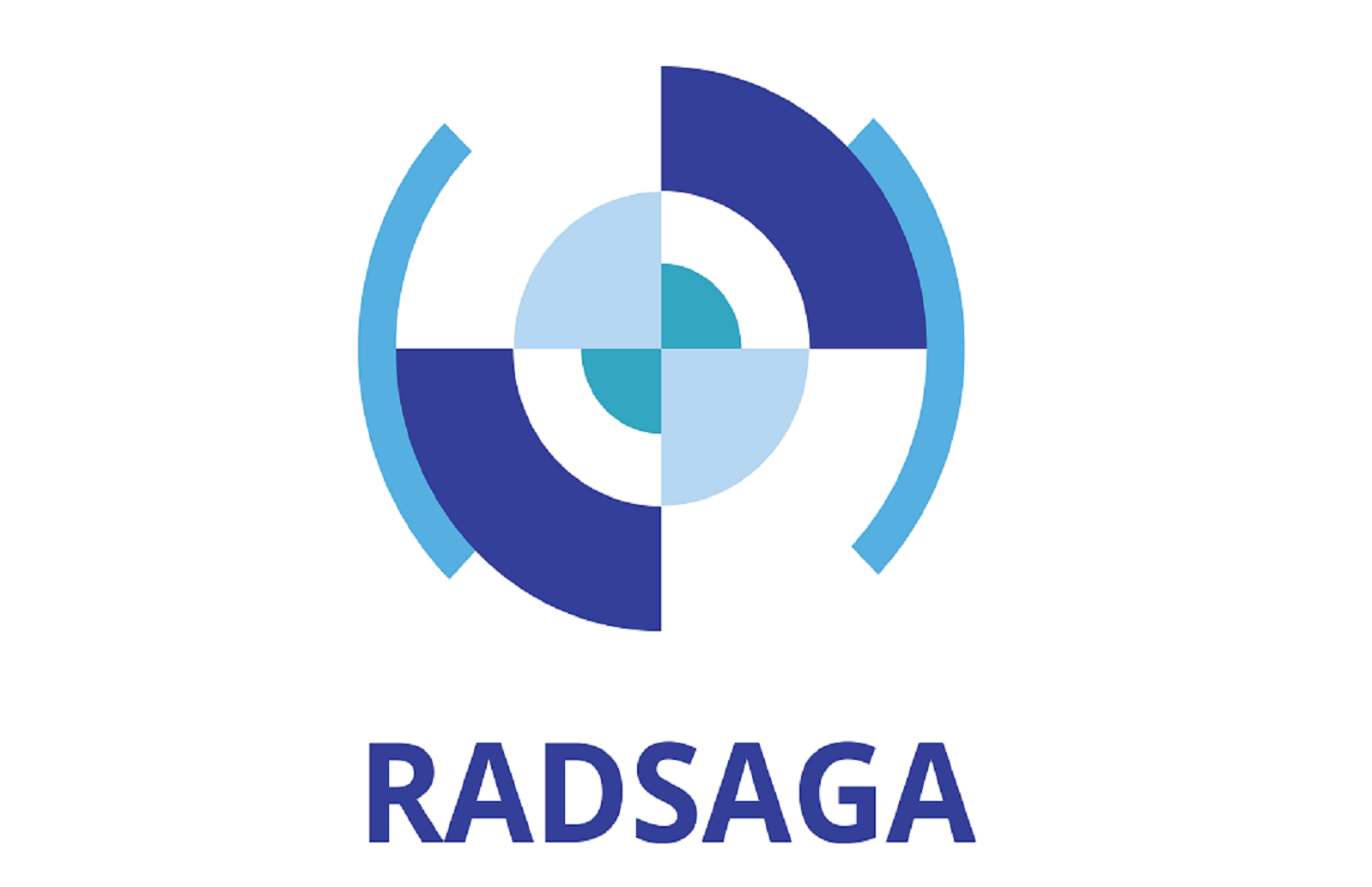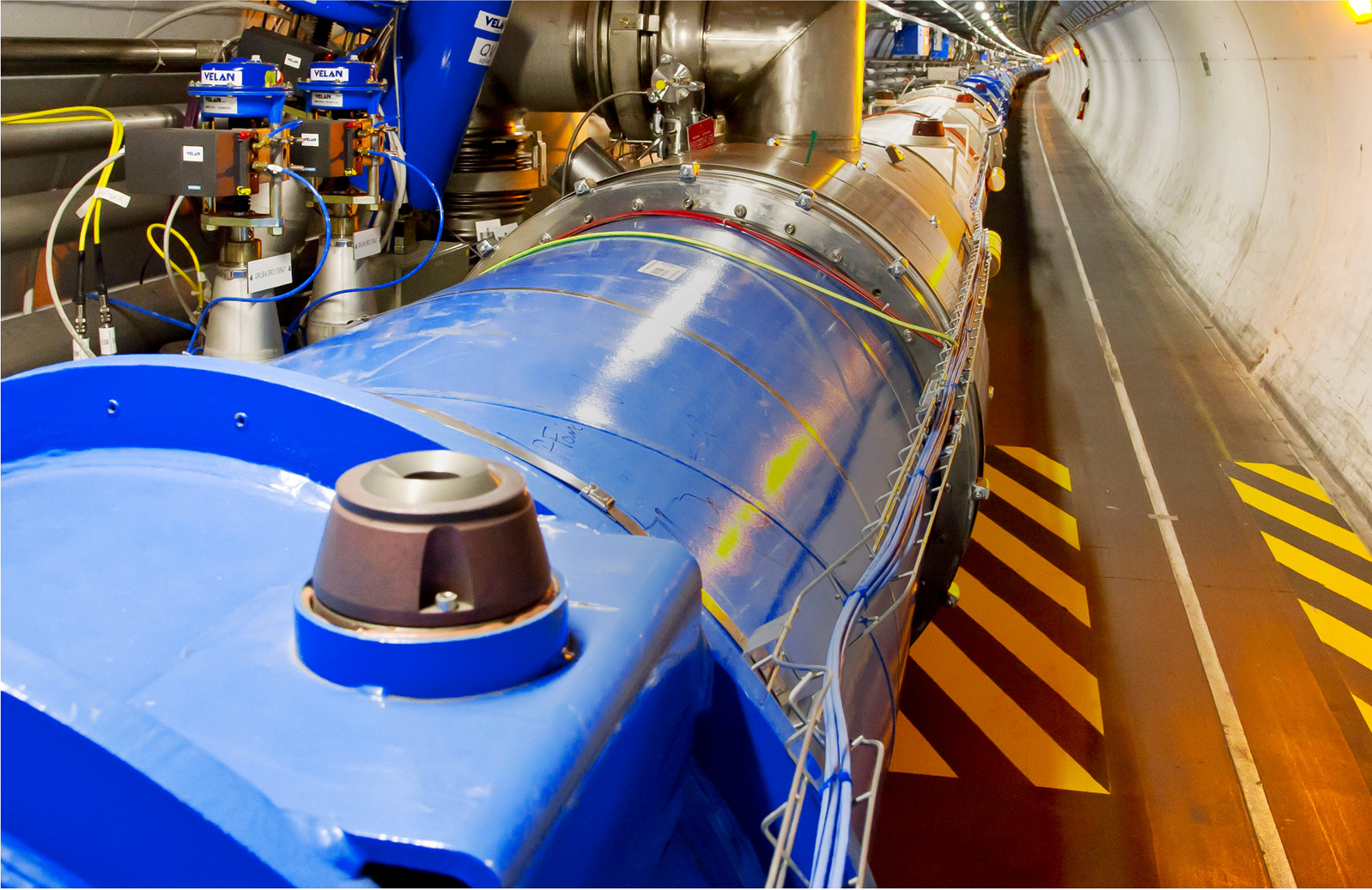Investigating the coupled impact of radiation effects and aging degradation mechanisms at RADEF
Within the framework of RADSAGA, Mohamed Mounir Mahmoud (ESR08) continues to study the coupledimpact of radiation effects and aging degradation mechanisms in advanced technology nodes. At the RADiation Effects Facility (RADEF) in Jyväskylä, he had a successful testing campaign on September 24th and 25th, 2020. There he used his custom designed test structure, the ProArray chip, to investigate the impact of aging degradation mechanisms on heavy ions and high energy proton SEU response of 28 nm FD-SOI technology. Daniel Söderström (ESR 02), a RADSAGA researcher hosted at the University of Jyväskylä, and Mikko Rossi, RADEF’s Laboratory Engineer, assisted in running and operating the experiment.
The ProArray chip is made of programmable arrays of transistors, and shift register chains in a 28 nm UTBB FD-SOI technology node. A new test setup PCBs weredesigned for this test campaign, this test setup allows testing 8 ProArray chips in parallel. Before the radiation tests, an accelerated aging process was performed on 4 ProArray chips, by stressing them for 60 hours with 150% of the nominal voltage in a 120 °C controlled climate chamber.
The RADEF cocktail of heavy ions was used to irradiate the fresh and pre-aged ProArray chips. The single event upsets (SEU) were monitored for different ions, each has different Linear Energy Transfer (LET), and the cross-section curves of the fresh and aged circuits were computed. Moreover, the effect of altering the supply voltage of the circuits was also tested as a potential technique for mitigating the negative impact of both radiation effects and aging degradation mechanisms. In addition, the highest energy proton, 52 MeV, was used to irradiate the fresh and pre-aged ProArray chips to study the effect of aging degradation on high energy proton SEU Response.
ESR08 Mohamed Mounir Mahmoud

Mohamed preparing 4 ProArray chips for accelerated aging process (Credit: Mohamed Mounir).
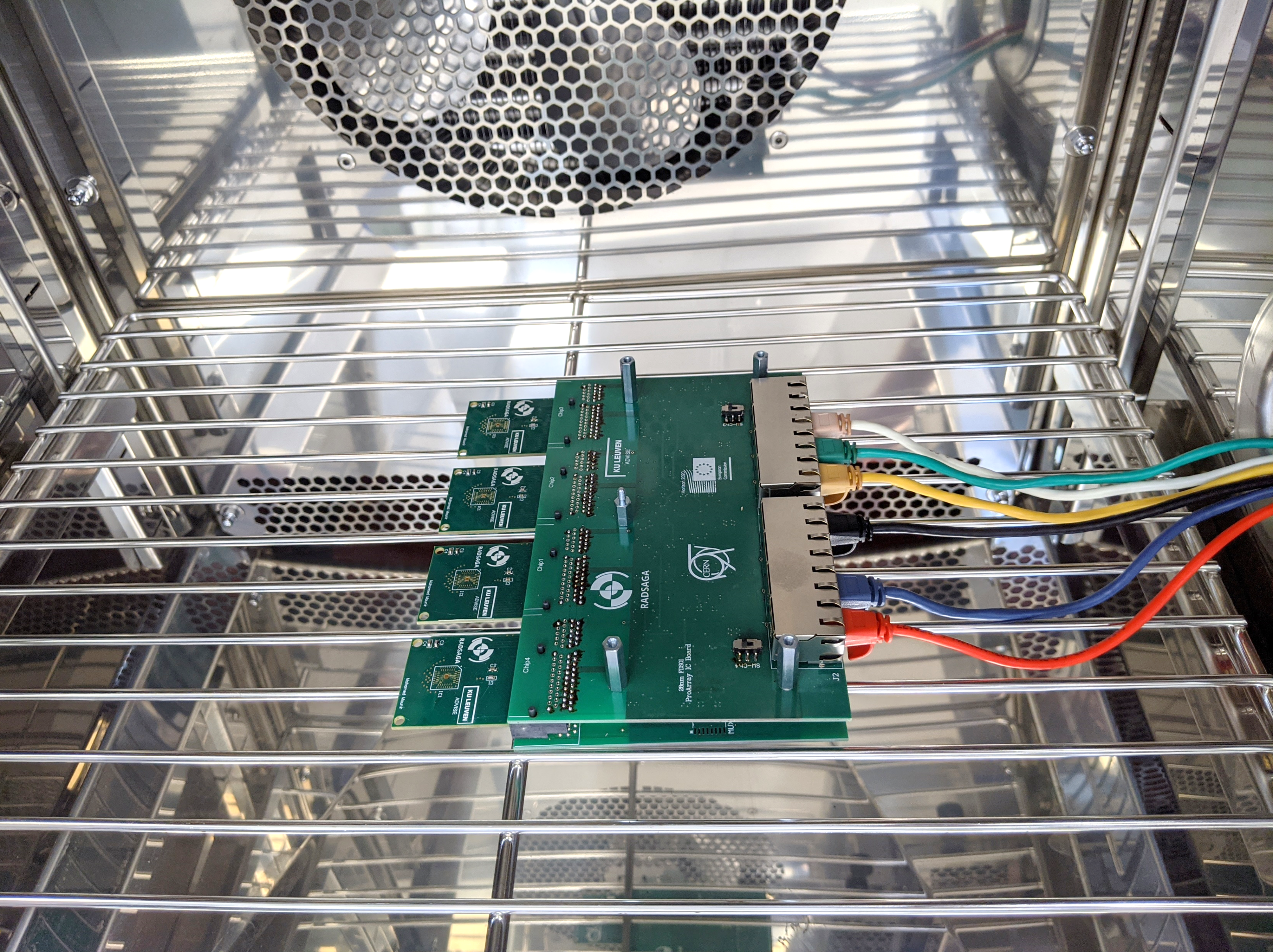
Aged ProArrays chipsafter stressing them for 60 hours with 150% of the nominal voltage in a 120 °C controlled climate chamber (Credit: Mohamed Mounir).

ProArray chips installed in the vacuum chamber for heavy ions irradiation (Credit: Daniel Söderström).
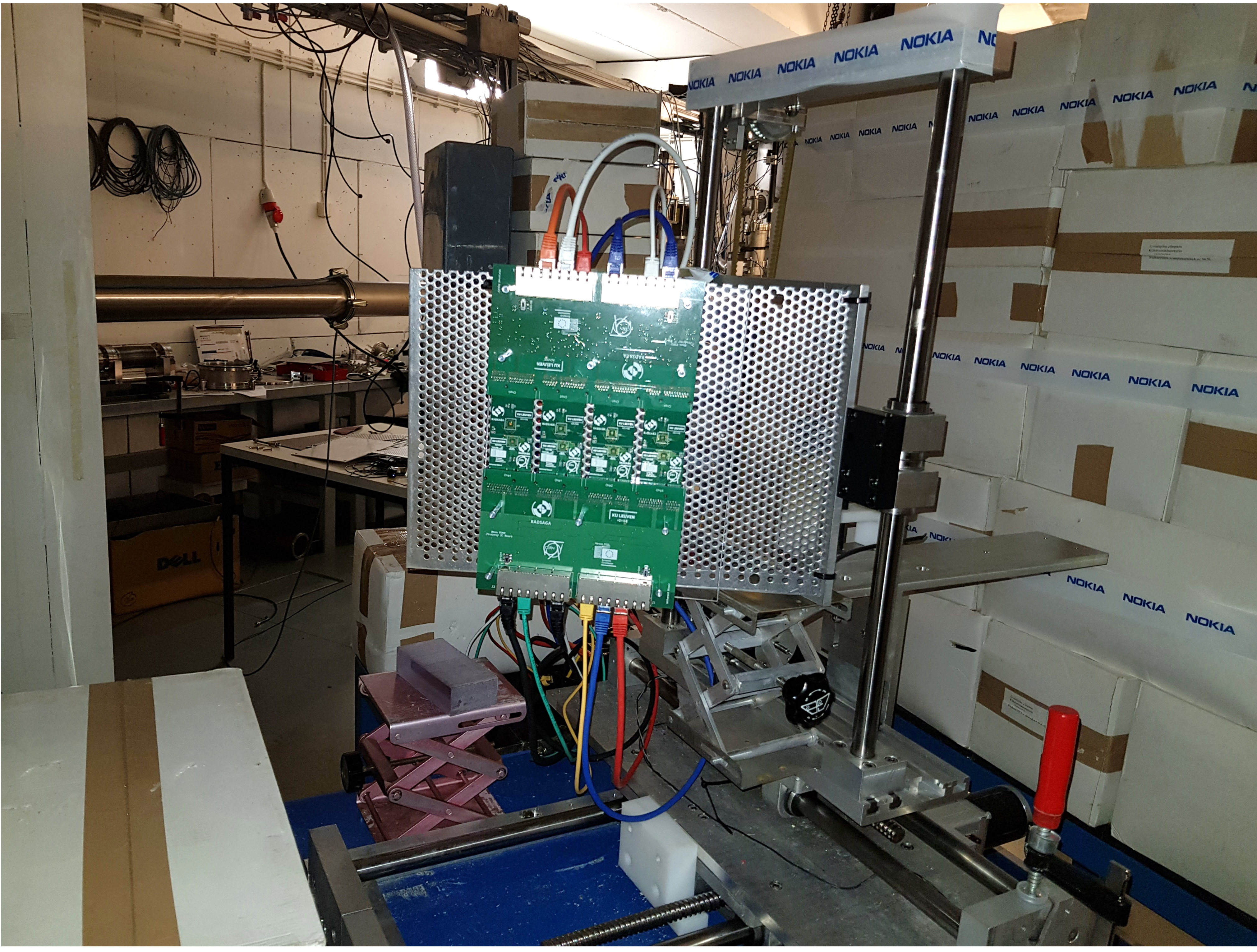
ProArray chips installed for the high energy proton irradiation (Credit: Daniel Söderström).
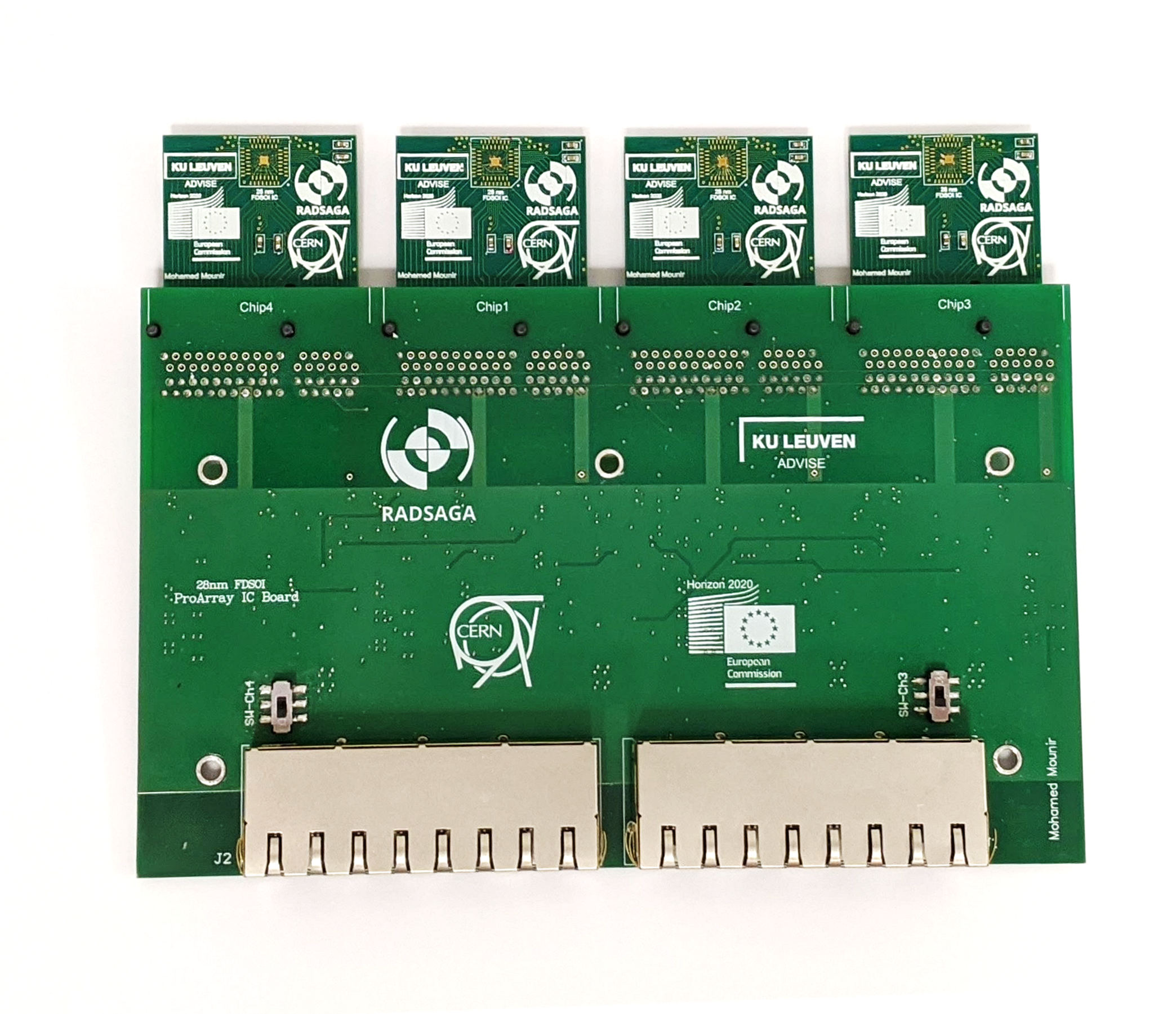
A close shot of one of the setups with 4 ProArray chips. NB: all the components (Transmitters, Receivers ... etc.) are places on the rear side of the PCB (Credit: Mohamed Mounir).
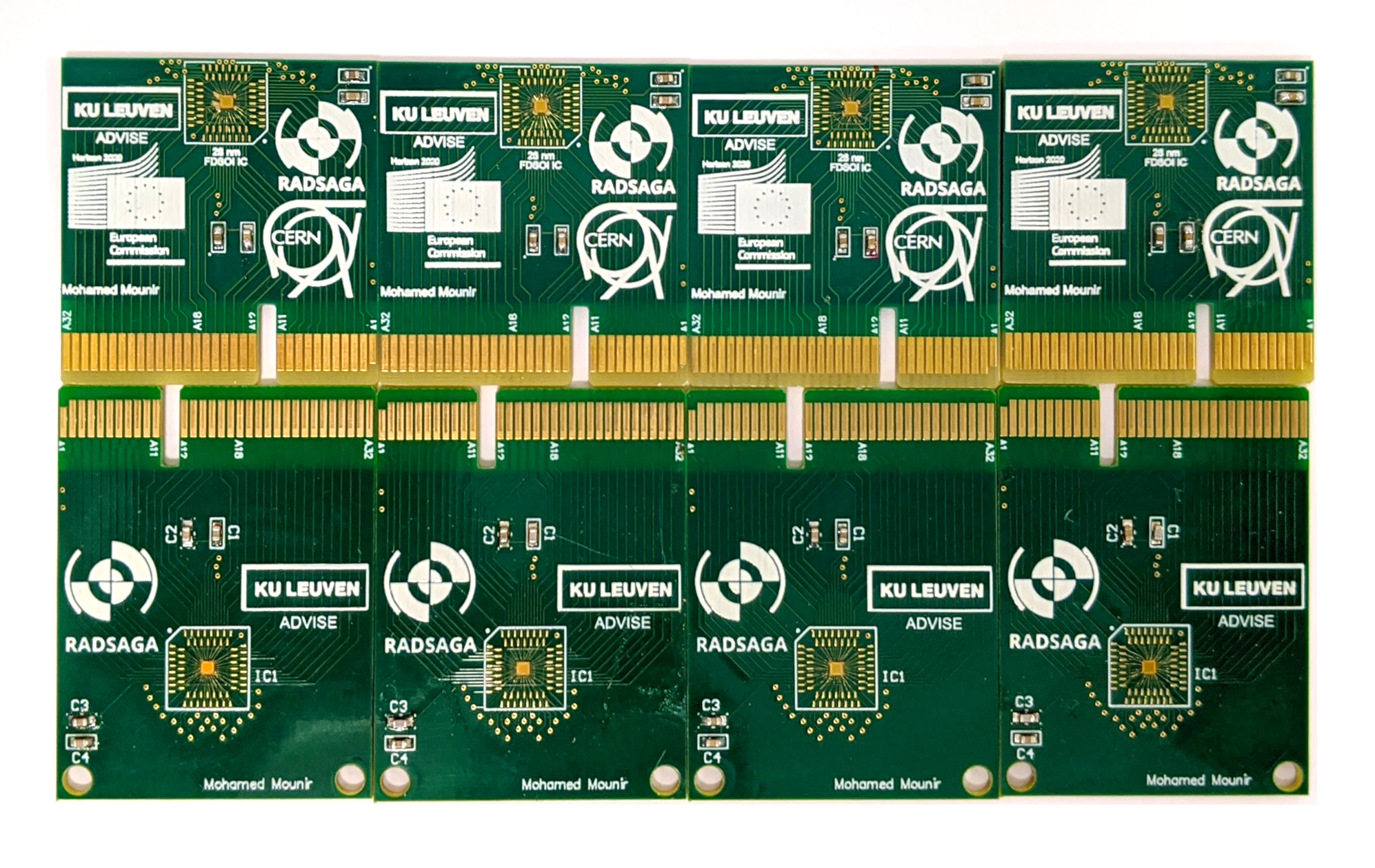
The 8 ProArray chips prepared for the test campaign, fresh chips (Top) and aged chips (Bottom) (Credit: Mohamed Mounir).
